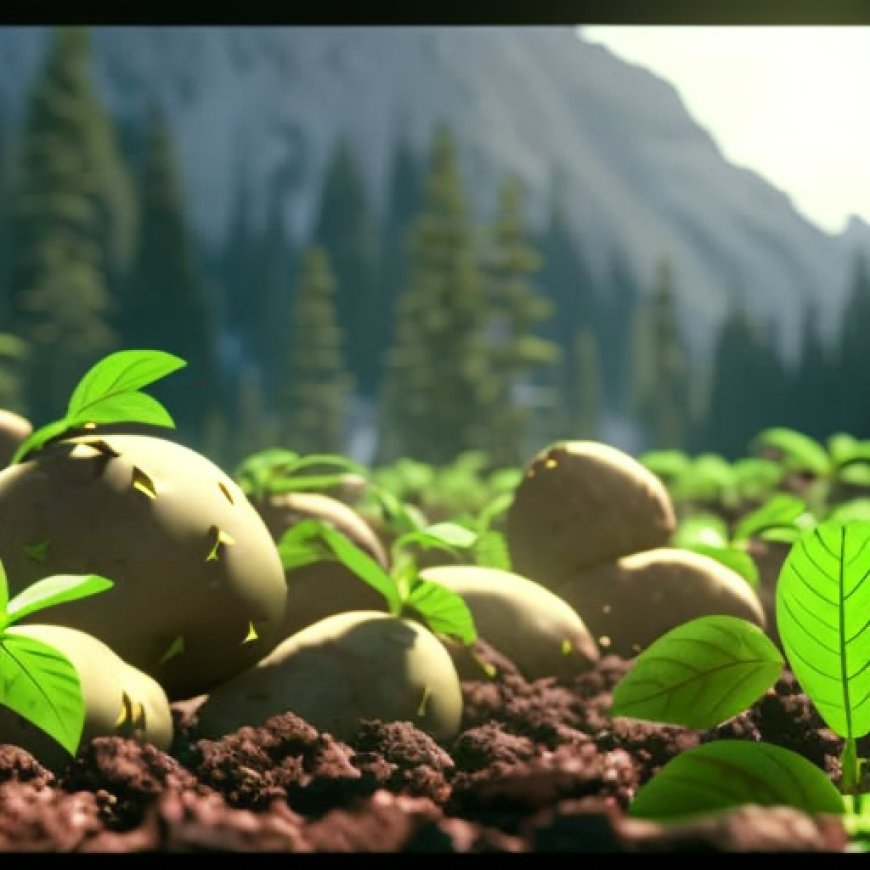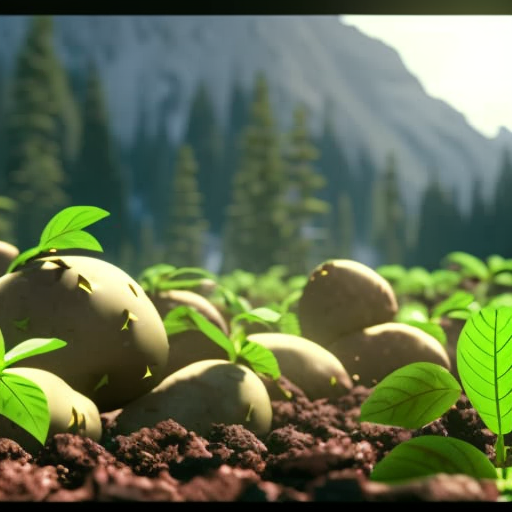Pacific Northwest consortium aims to improve potato production with eco-friendly methods
Pacific Northwest consortium aims to improve potato production with eco-friendly methods Oregon Public Broadcasting


A $50 Million Grant Project Aims to Reduce Carbon Footprint of Potato Farming in the Pacific Northwest
Oregon State University has received a five-year, $50 million grant from the US Department of Agriculture to implement sustainable practices and reduce the carbon footprint of potato farming in the Pacific Northwest. The project will focus on improving soil health, crop outcomes, and implementing climate-smart practices in collaboration with farmers and Native American tribes.
Exploring Sustainable Practices
Jeffrey Steiner, the project leader from OSU’s Global Hemp Innovation Center, highlighted that traditional potato production methods often result in soil disturbance and greenhouse gas emissions. The project aims to develop new methods that growers can adopt to minimize these impacts. This may include practices such as cover cropping, reduced tillage, and nutrient management to enhance soil health and reduce environmental harm.
Benefits of Sustainable Techniques
Researchers believe that the combination of these sustainable techniques can significantly increase soil organic matter, reduce nutrient losses, and improve water-holding capacity. These improvements are expected to enhance soil health, conserve water resources, and contribute to climate-smart outcomes aligned with the Sustainable Development Goals (SDGs).
Partnerships and Incentives
The Nez Perce Tribe (Nimiipuu) is one of the project partners, and they are eager to learn and implement climate-smart practices. The USDA states that Oregon, Washington, and Idaho collectively produce 62% of the nation’s potatoes, with an annual value of $2.2 billion. Participating farmers and Native American tribes will receive incentive payments to offset initial adoption costs and mitigate risks associated with implementing climate-smart practices.
Monitoring and Marketing
Oregon State University will monitor the effects of changes in soil management by collecting and analyzing soil data. This data will be used to verify the effectiveness of the approaches implemented. Additionally, the project aims to develop marketing strategies to promote climate-smart potatoes and other crops. Producers envision selling branded consumer products that offer a climate-smart premium to participating farmers and processors.
Project Partners
- University of Idaho
- Washington State University
- Colville and Yakima tribes
- Soil Health Institute (North Carolina)
- LoCo+
- 7 Generations LLC
- Industrial Hemp Association of Washington
- Lamb Weston
- Frito-Lay
- Threemile Canyon Farms
- Mart Produce
- Simplot
- Marc Staunton
- Scotty Fenters
- GMP Orchards LLC
- Selkirk Ag LLC
- Triangle Ranch
SDGs, Targets, and Indicators Analysis
1. Which SDGs are addressed or connected to the issues highlighted in the article?
- SDG 2: Zero Hunger – The article discusses improving crop outcomes and increasing crop production through climate-smart practices in potato farming.
- SDG 13: Climate Action – The focus of the project is to reduce the carbon footprint of potato farming and develop climate-smart practices.
- SDG 15: Life on Land – The project aims to improve soil health and increase soil organic matter, which contributes to the overall health of land ecosystems.
2. What specific targets under those SDGs can be identified based on the article’s content?
- SDG 2.4: By 2030, ensure sustainable food production systems and implement resilient agricultural practices that increase productivity and production, that help maintain ecosystems, that strengthen capacity for adaptation to climate change, extreme weather, drought, flooding, and other disasters, and that progressively improve land and soil quality.
- SDG 13.2: Integrate climate change measures into national policies, strategies, and planning.
- SDG 15.3: By 2030, combat desertification, restore degraded land and soil, including land affected by desertification, drought, and floods, and strive to achieve a land degradation-neutral world.
3. Are there any indicators mentioned or implied in the article that can be used to measure progress towards the identified targets?
- Soil data measurement: The effects of changes in soil management will be monitored by measuring soil data, which will be used to verify the approaches are working.
- Adoption of climate-smart practices: Participating farmers and Native American Tribes will receive incentive payments to offset the initial costs of adopting climate-smart practices, indicating the adoption rate of these practices.
- Market development for climate-smart products: The project aims to develop ways to market and promote climate-smart potatoes and other crops, which can be measured by the success and adoption of these branded consumer products.
SDGs, Targets, and Indicators Table
| SDGs | Targets | Indicators |
|---|---|---|
| SDG 2: Zero Hunger | 2.4: By 2030, ensure sustainable food production systems and implement resilient agricultural practices that increase productivity and production, that help maintain ecosystems, that strengthen capacity for adaptation to climate change, extreme weather, drought, flooding, and other disasters, and that progressively improve land and soil quality. | – Adoption of climate-smart practices by farmers and Native American Tribes. – Increase in crop production through climate-smart practices. |
| SDG 13: Climate Action | 13.2: Integrate climate change measures into national policies, strategies, and planning. | – Adoption of climate-smart practices by farmers and Native American Tribes. – Reduction in carbon footprint of potato farming. |
| SDG 15: Life on Land | 15.3: By 2030, combat desertification, restore degraded land and soil, including land affected by desertification, drought, and floods, and strive to achieve a land degradation-neutral world. | – Increase in soil organic matter through improved soil management. – Improvement in water-holding capacity of the soil. |
Behold! This splendid article springs forth from the wellspring of knowledge, shaped by a wondrous proprietary AI technology that delved into a vast ocean of data, illuminating the path towards the Sustainable Development Goals. Remember that all rights are reserved by SDG Investors LLC, empowering us to champion progress together.
Source: opb.org

Join us, as fellow seekers of change, on a transformative journey at https://sdgtalks.ai/welcome, where you can become a member and actively contribute to shaping a brighter future.







